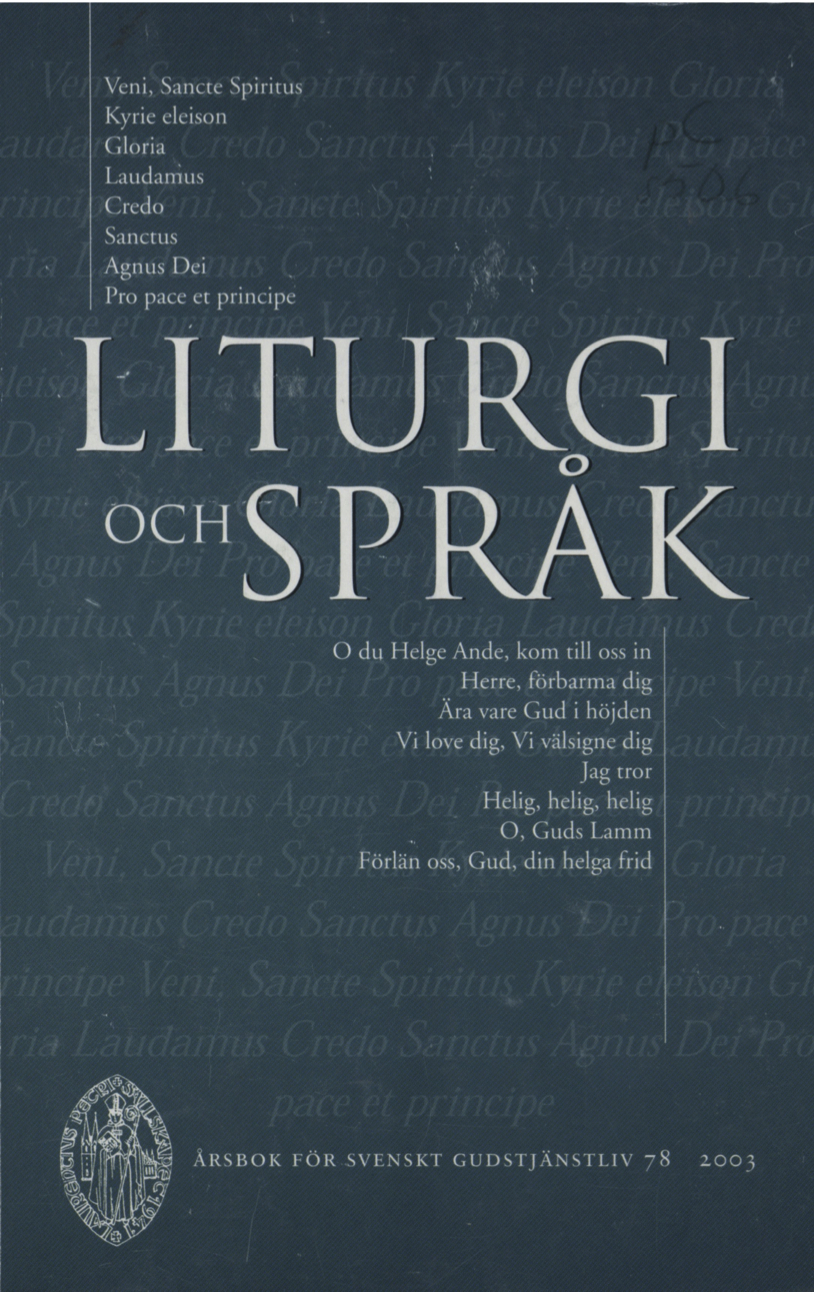Kan kyrkor flyga? Arkitekturens liturgi i estetisk och teologisk belysning
Abstract
The relationship between liturgical language and church buildings offers an extensive field for research. Many researchers have shown how architecture reflects ideological, social, cultural and historical phenomena concerning the body of the church. Architecture thus becomes »architexture». One can even ask whether and in what ways the building collaborates with believers’ experiences of a liberating God.
An important idea is that God does not encounter us in particular, limited places, but in a movement out into the whole inhabited world (oikumene). The faithful themselves become holy places. The people of China in the Early church were therefore a people on the move, who did not necessarily need particular rooms. As persecution gradually decreased, worship moved into buildings - in the form of the basilica, but even there the people were in motion, forward from the middle of the church to the place where the eucharist was to be celebrated and the historical and continuing incarnation experienced. Body, soul and spirit, previously separated, become transparent to each other. In Gothic cathedrals in particular it is the light and the elevation in a double movement from above down wards and from below upwards that »speaks»: God is »light of light». In the interior of the church are made emotions and experience; in shaping the church’s exterior both feeling and scholastic reason are reflected, especially in the Gothic style with its high elevation, constructed in such a way that weight and lightness balance each other.
Kurt Schwitters’architecture is related to the influential movement of his day amongst expressionist architects. In particular sacred spaces in different religions have tried to create a totality of architecture, painting, sculpture, artistic glass and music, according to Schwitters. Strict geometric symmetry alternates with curving lines in his architecture, giving an experience of forms both being created and dissolved. Antoni Gaudis cathedral in Barcelona, a church which is never completed, illustrates for precisely that reason the movement of faith towards the ineffable and that which is in the process of perfection.
Downloads
Publicerad
Nummer
Sektion
Licens
© författarna, Laurentius Petri Sällskapet för svenskt gudstjänstliv samt Artos & Norma bokförlag. Det är tillåtet att kopiera och använda material ur Svenskt Gudstjänstliv för forskningsändamål om källan anges. För övriga ändamål kontakta respektive artikelförfattare samt förlaget. Särskilda restriktioner kan gälla för bildmaterial.


